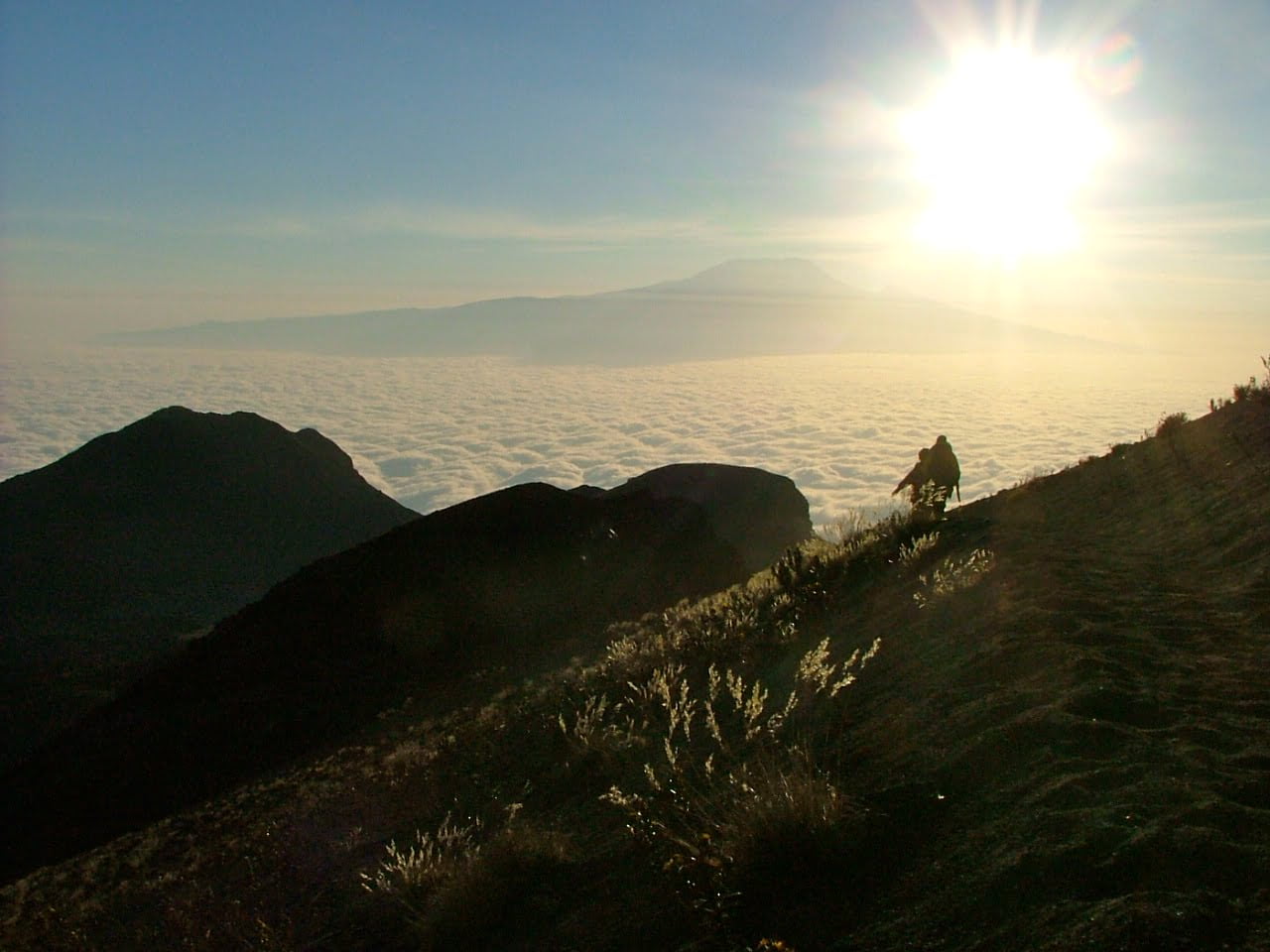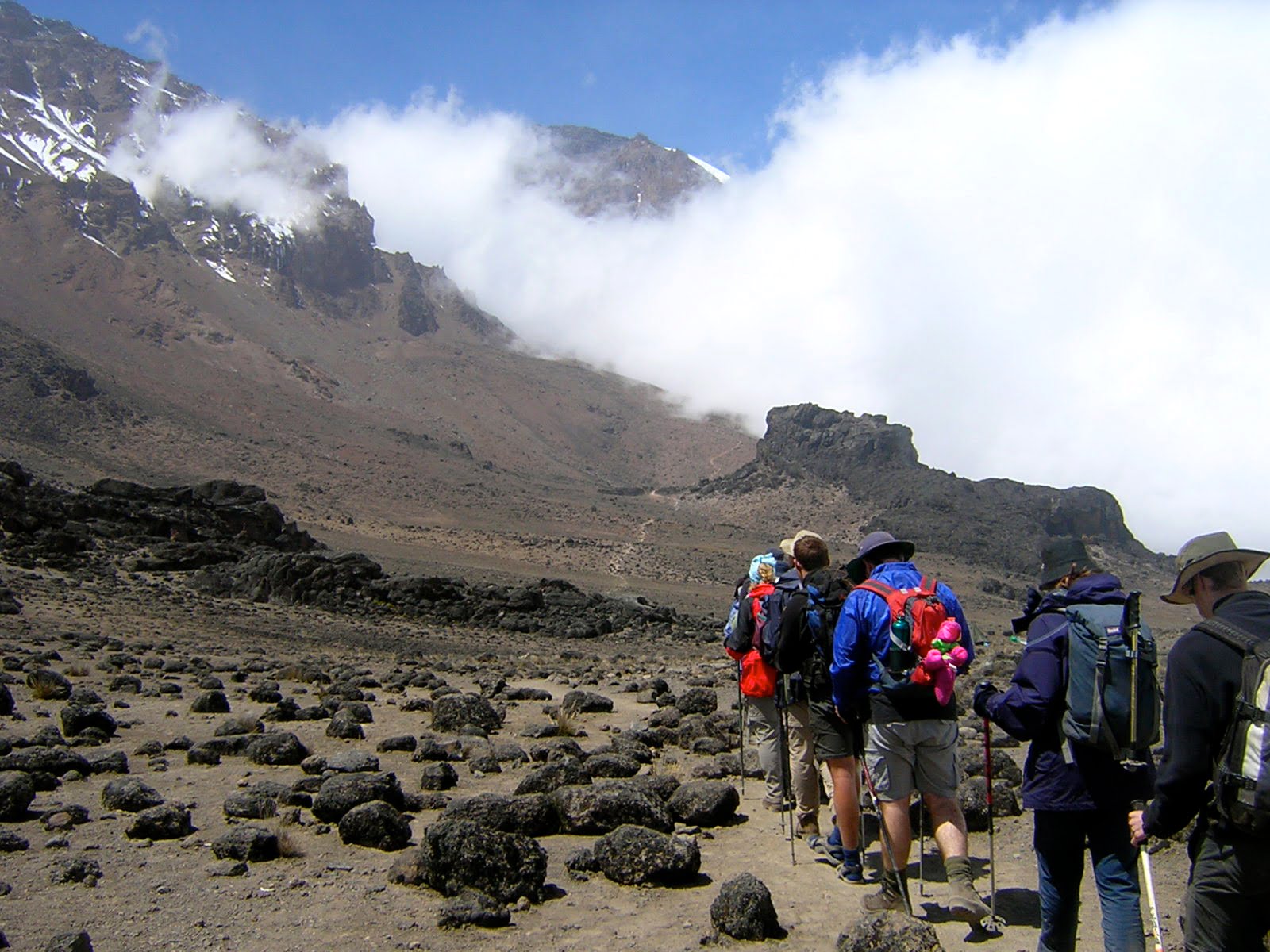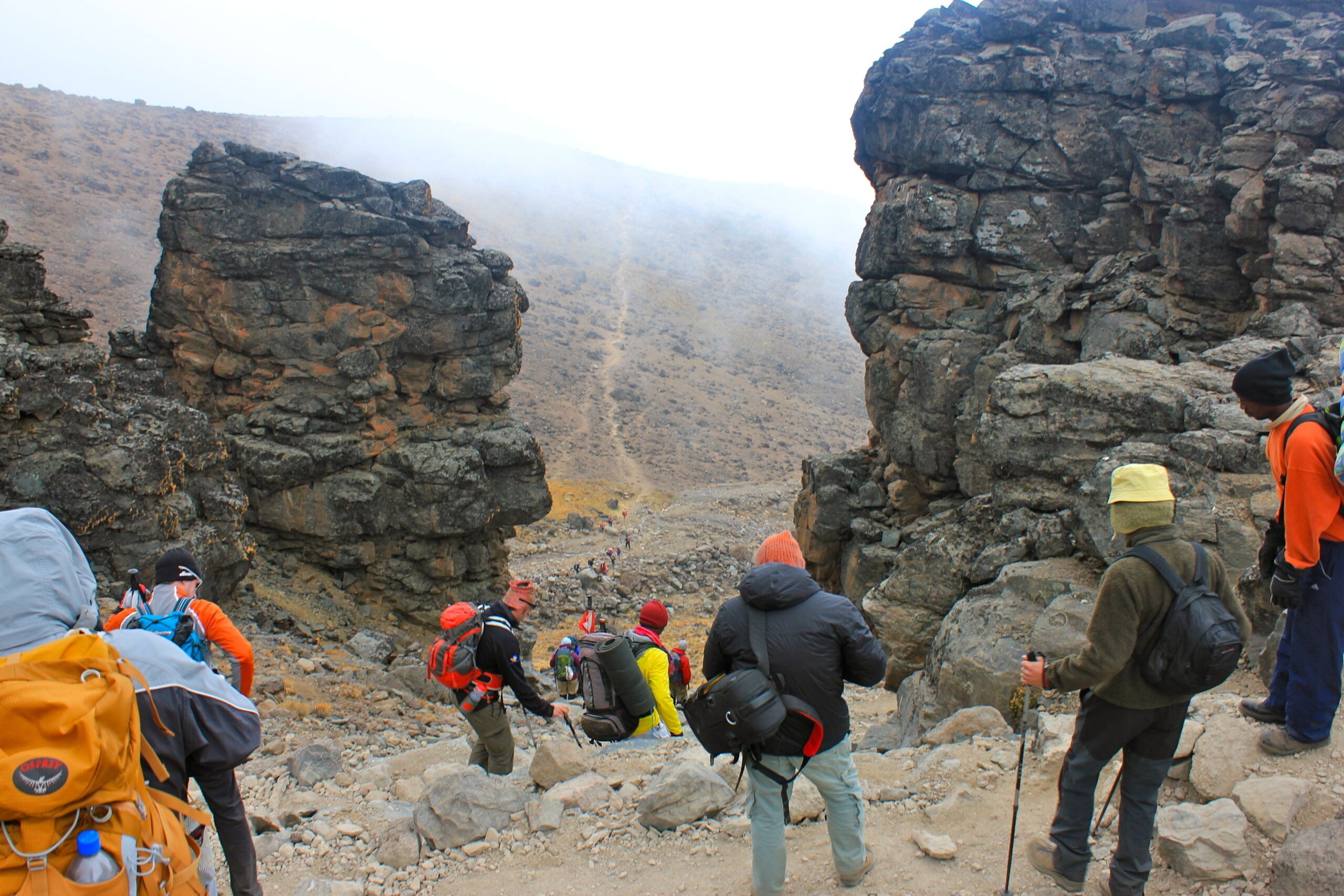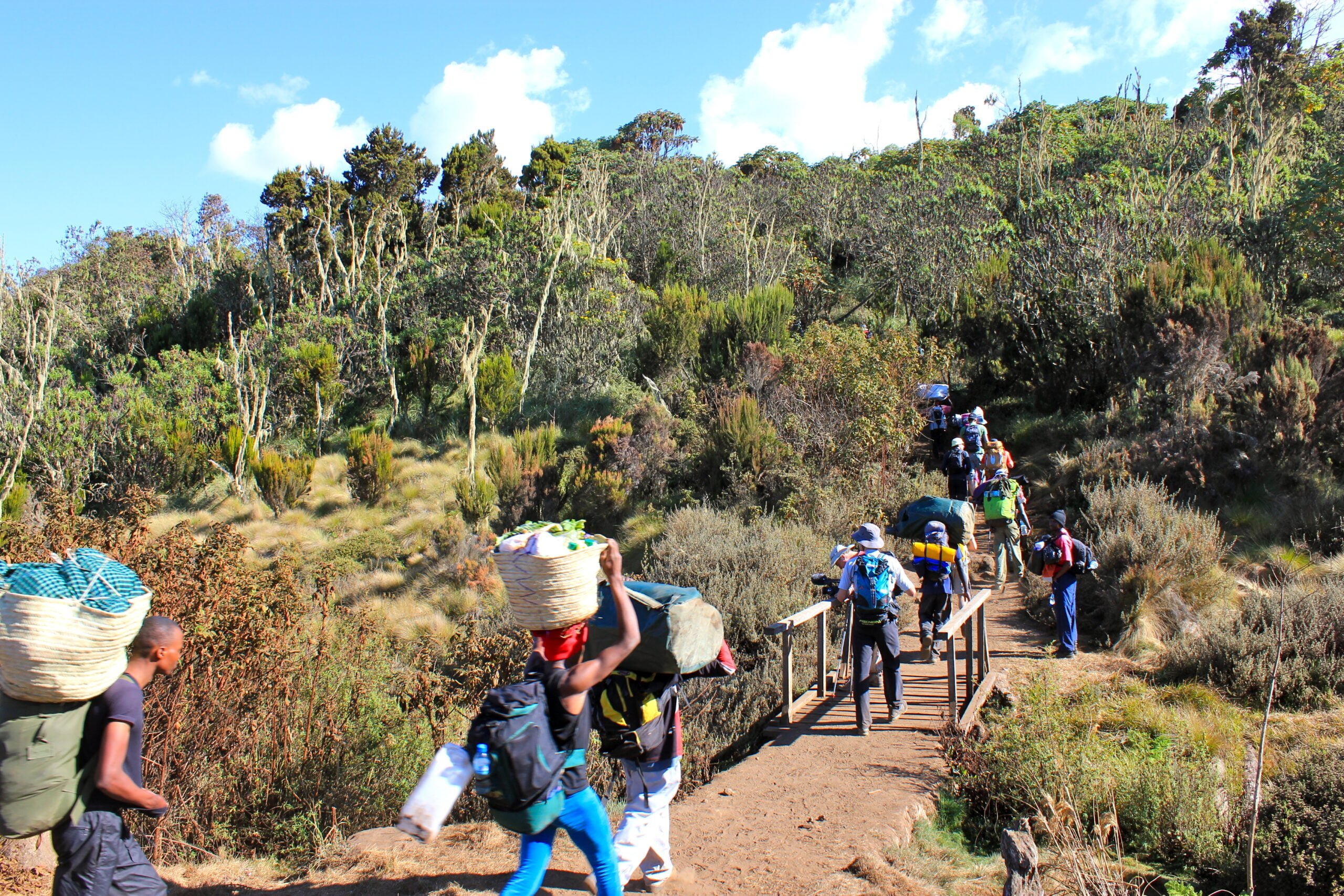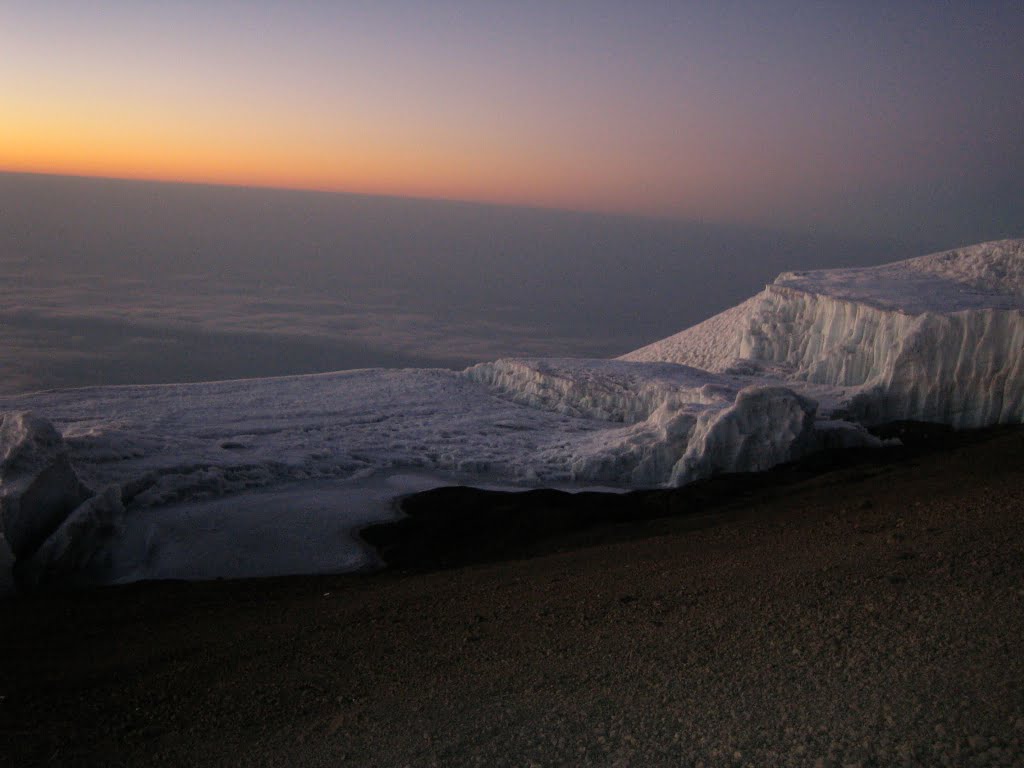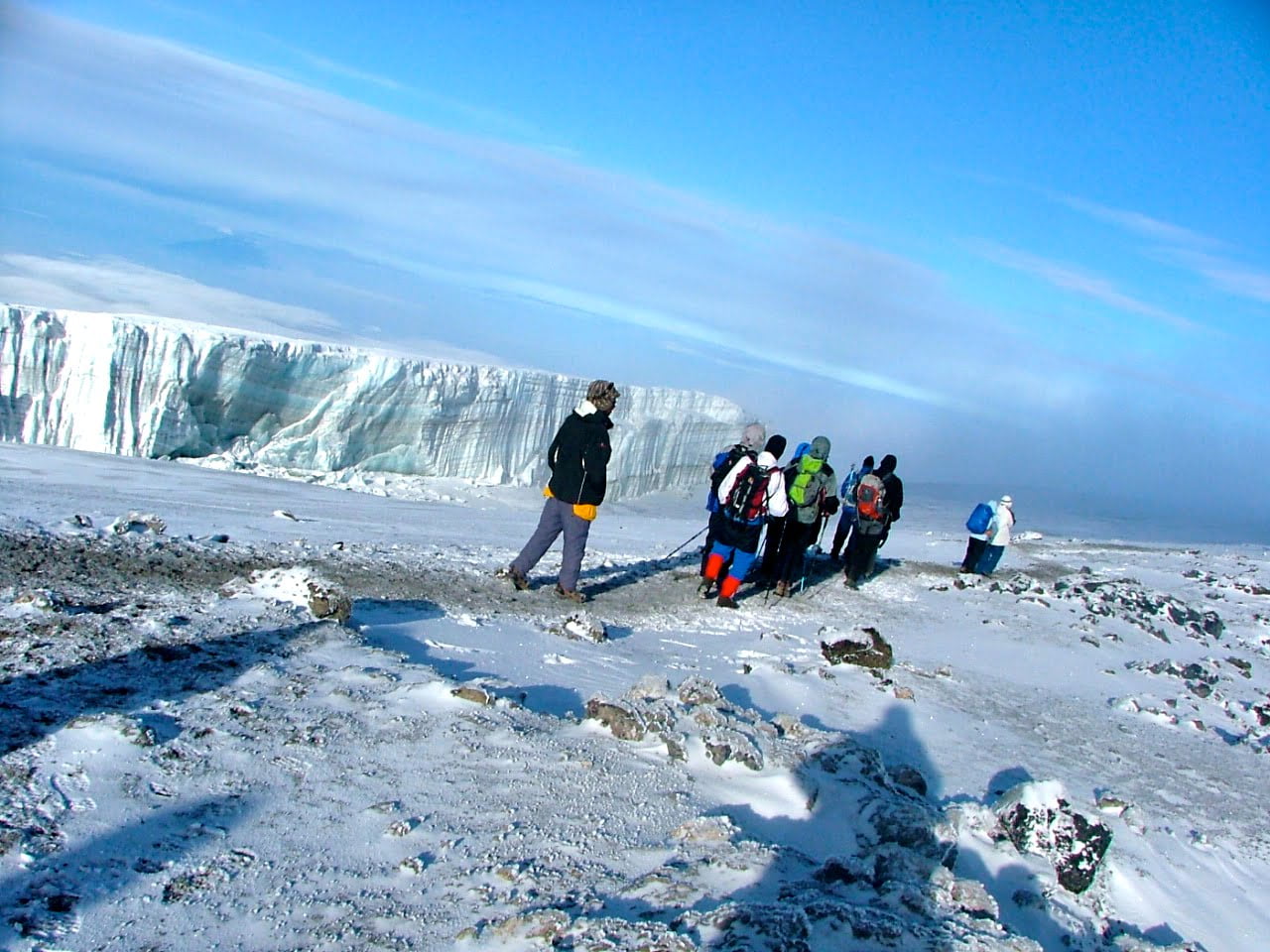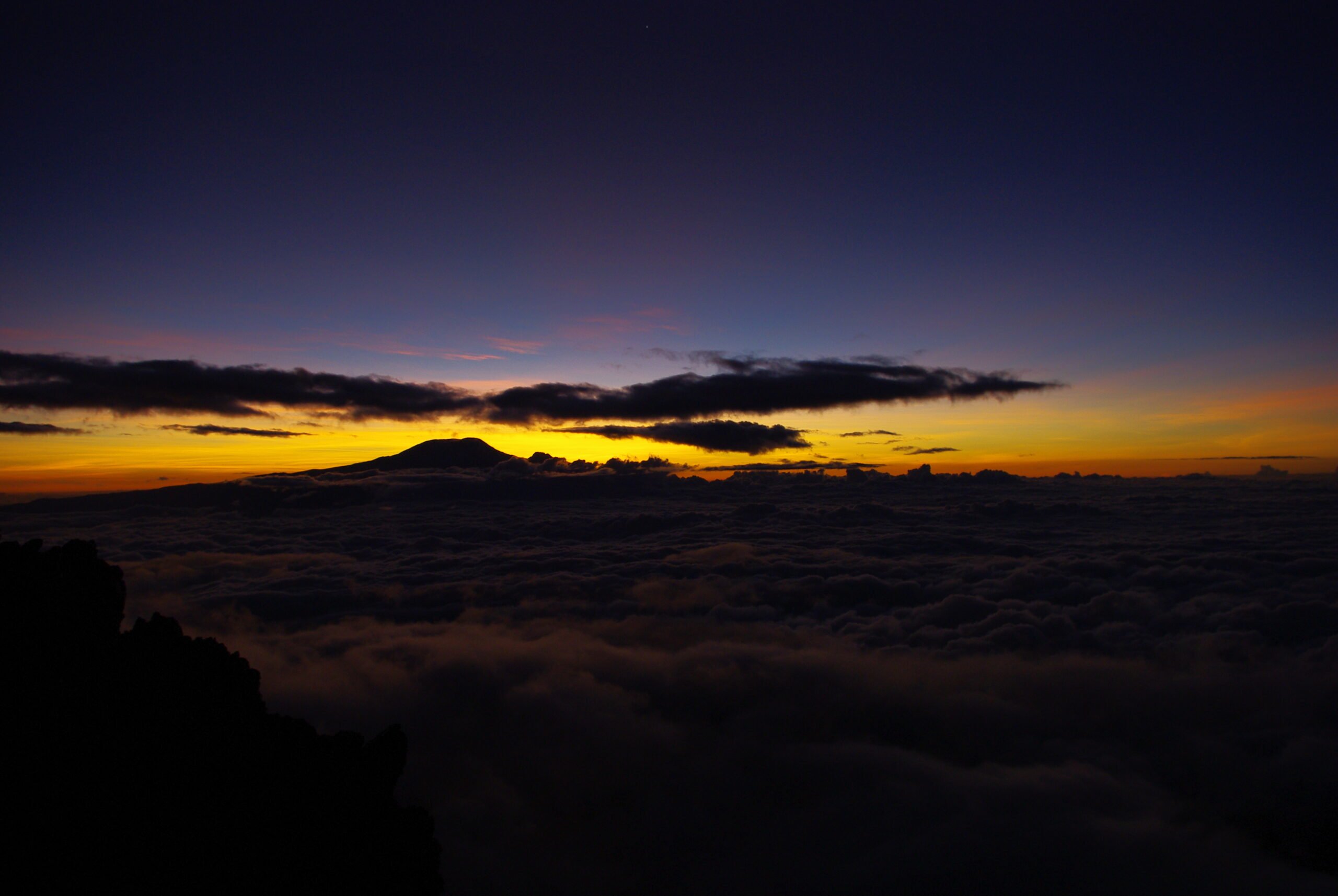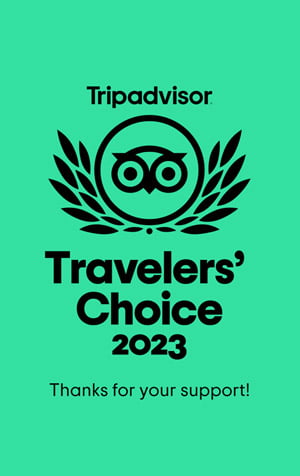TRIP TO TANZANIA: CLIMBING KILIMANJARO
Climbing Kilimanjaro is no mean feat. But with the help of a local guide, you can reach the summit. There are different routes to the top of the mountain, short and long, difficult and easier. Let us help you reach the summit.
- The Machame route
- The Rongaï route
- Marangu Route
- Lemosho Route
The Machame route
Often regarded as the best route for acclimatisation, this is the most popular choice for climbers attempting to reach the summit of Mount Kilimanjaro for the first time. The route is long and varied, exposing climbers to a variety of landscapes and experiences throughout the trek. From the rainforest at Machame Gate, through rocky plateaux, to the glacial peaks of the final ascent.
The Marangu Route
The Marangu route is the shortest and therefore fastest part of the trek (just 20 km).
You’ll pass through a richly wooded area teeming with fruit trees, butterflies and ferns, as well as waterfalls.
Be prepared to walk for 5-6 hours a day, except on the last day when you’ll have to draw on your reserves for a 10-hour hike.
The Rongaï Way
This is the only route north from the top of the mountain.
It will be a 6-day journey, with much of the terrain off the trails and wild. You’ll start your journey along the Kenyan border, and finish along a wooded track in Tanzania.
The Lemosho route
The Lemosho route is breathtakingly beautiful, with a high success rate and a tranquillity rarely found in the heart of Africa.
Please note that the price of the Lemosho route is slightly higher than other routes for transport reasons.

